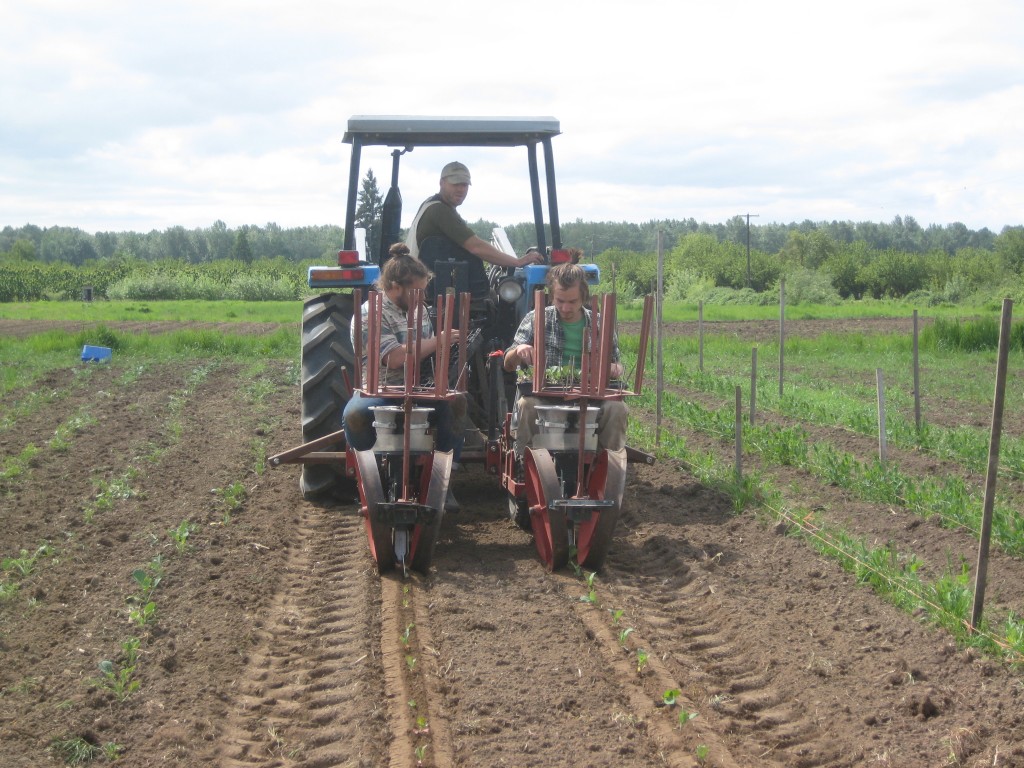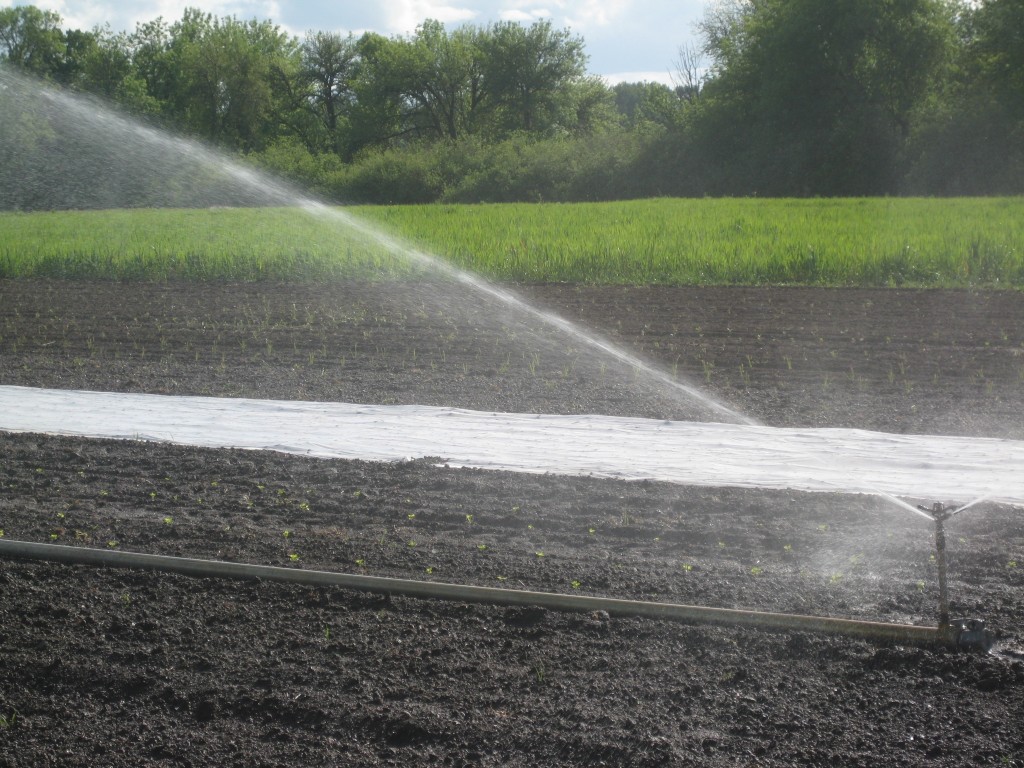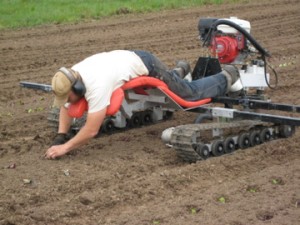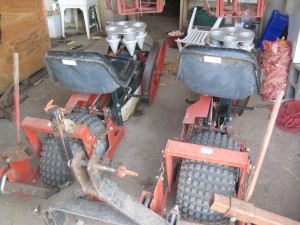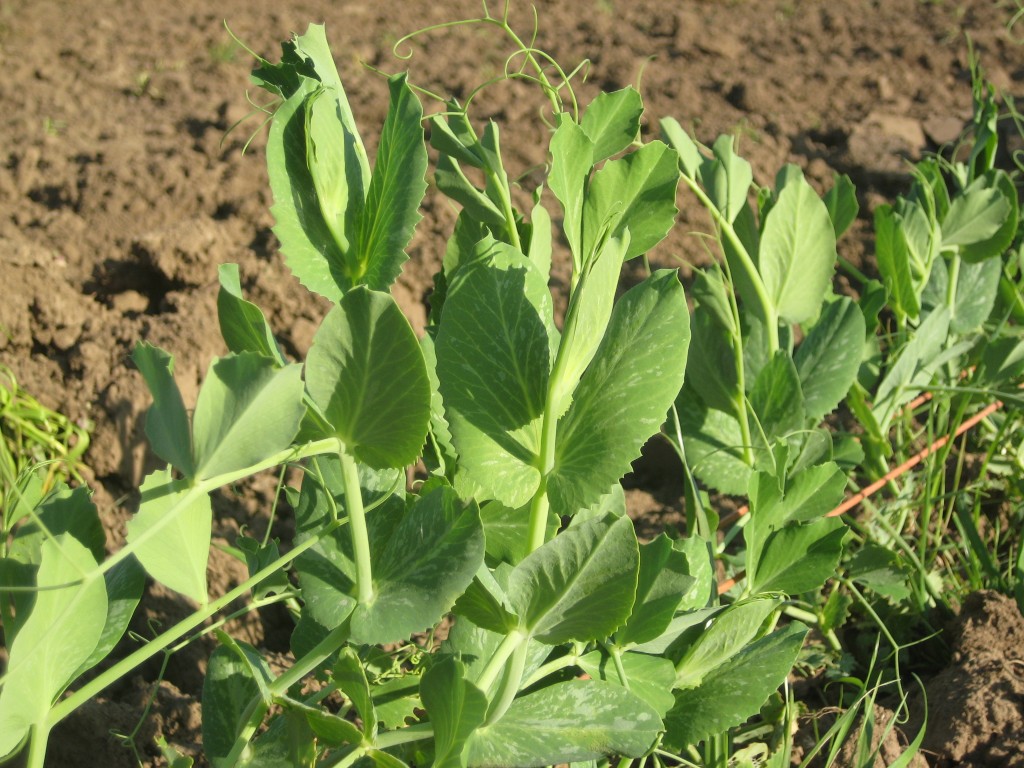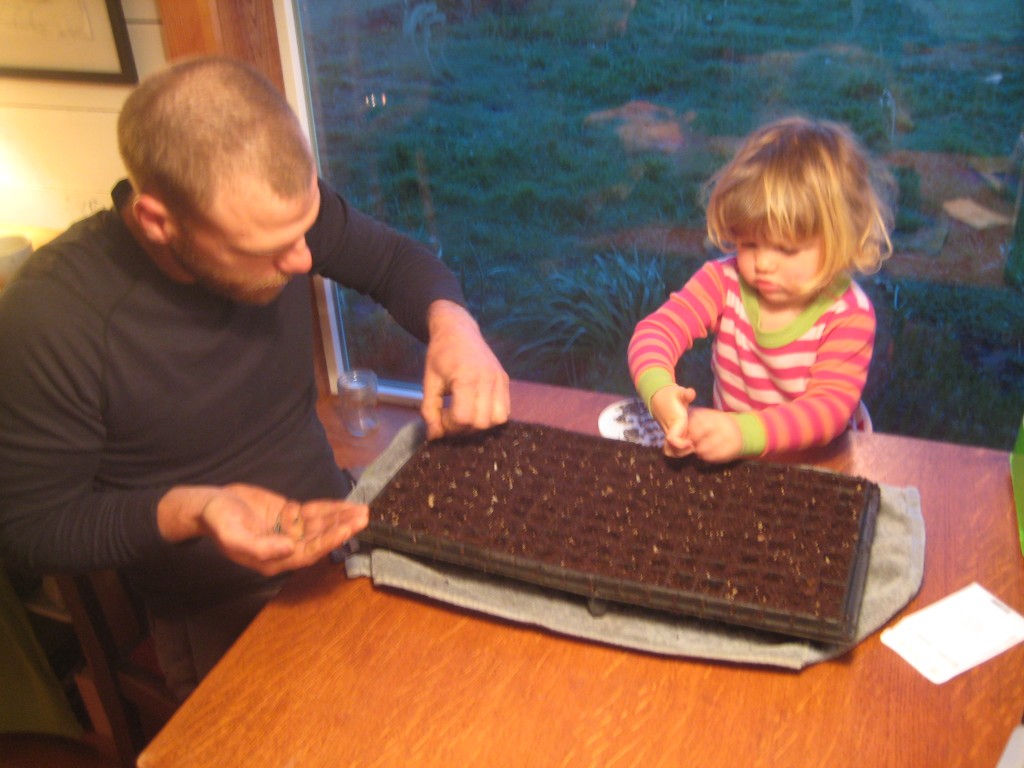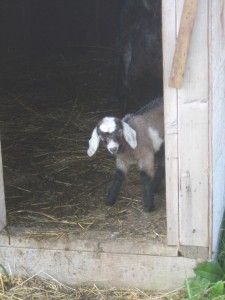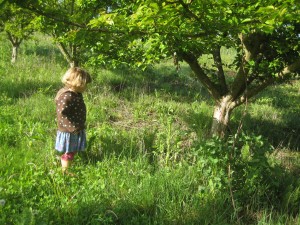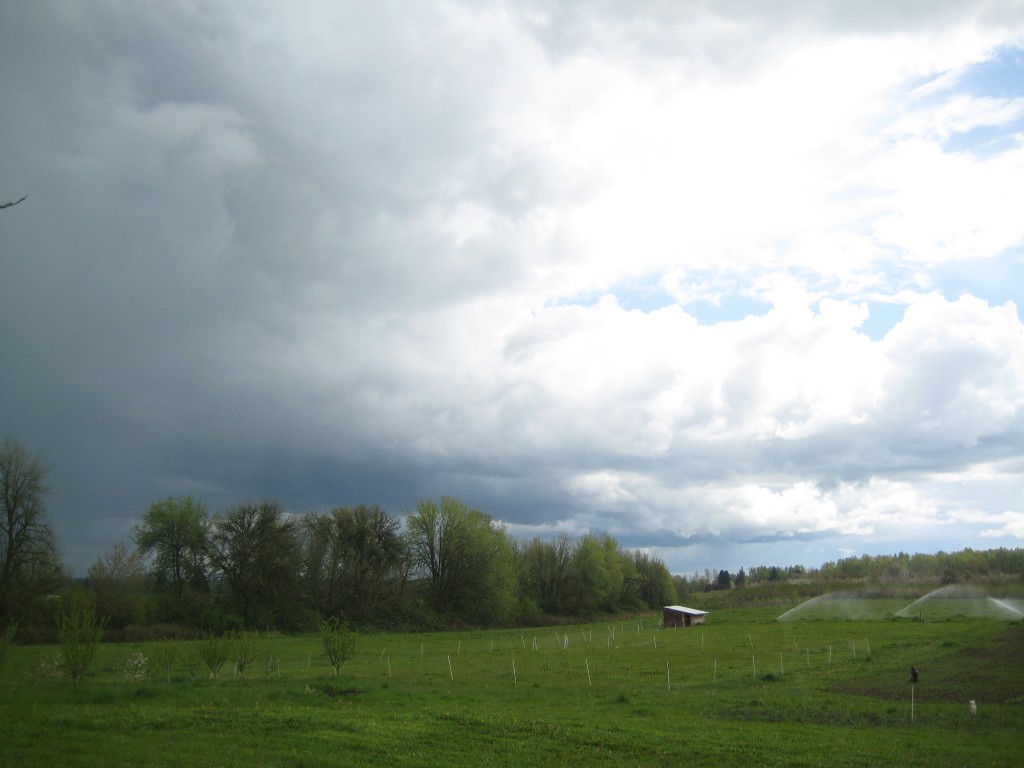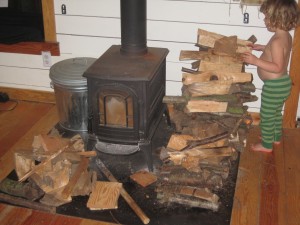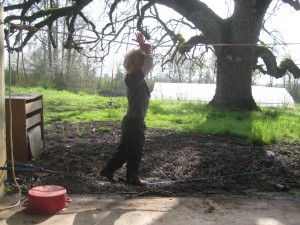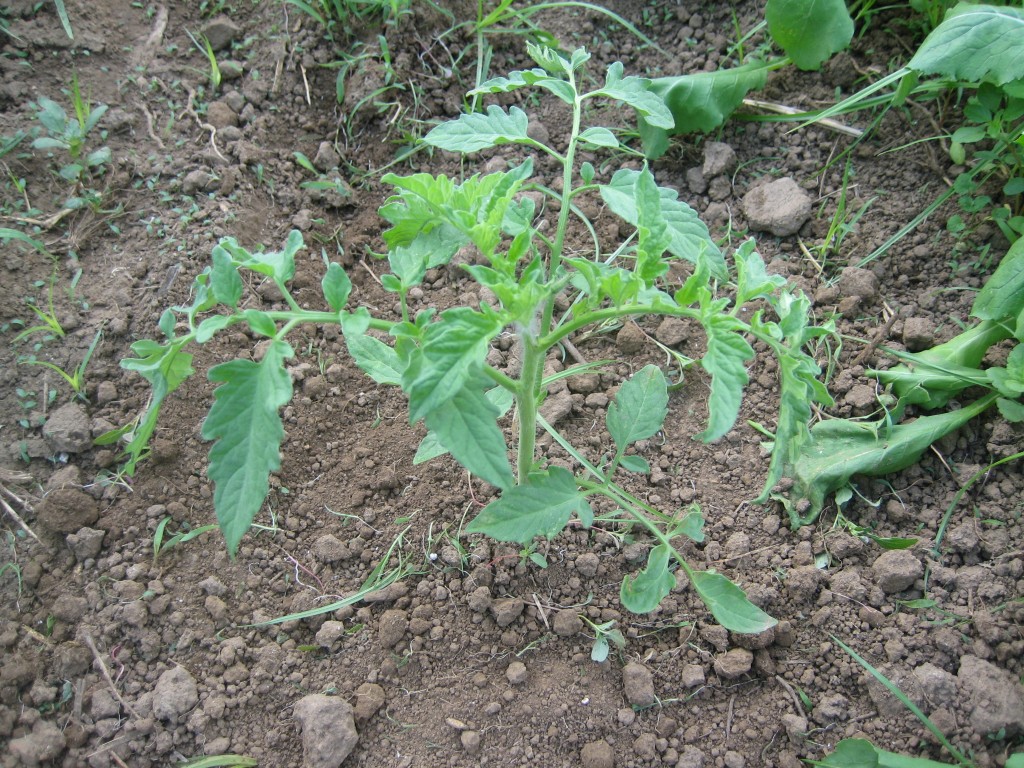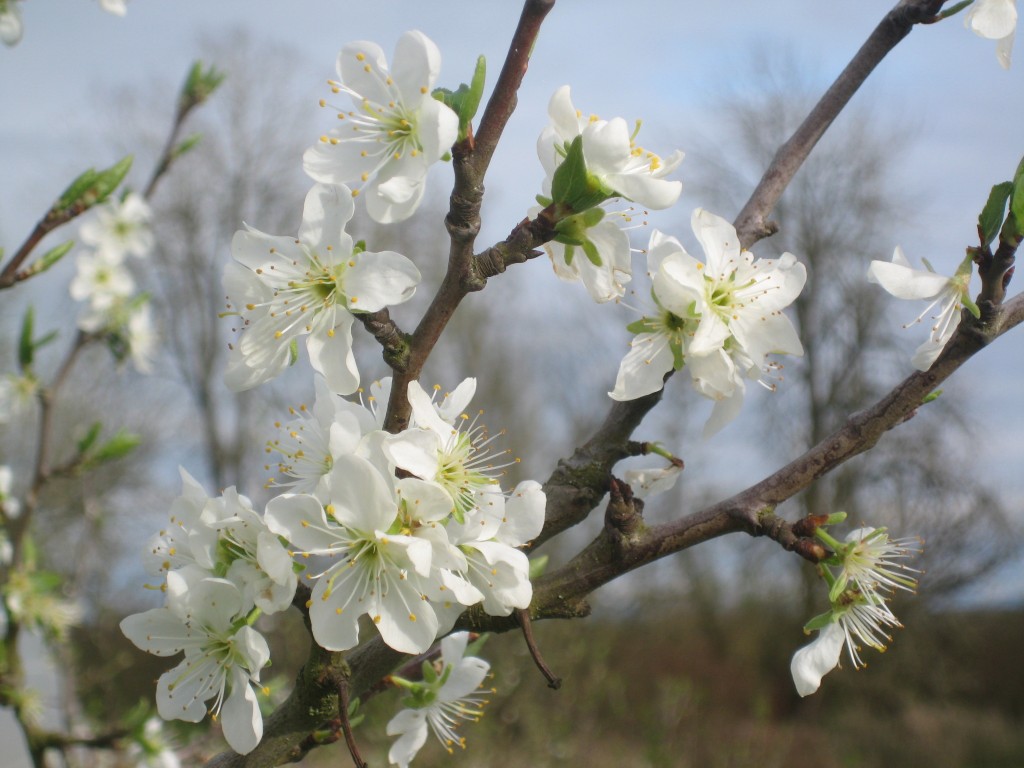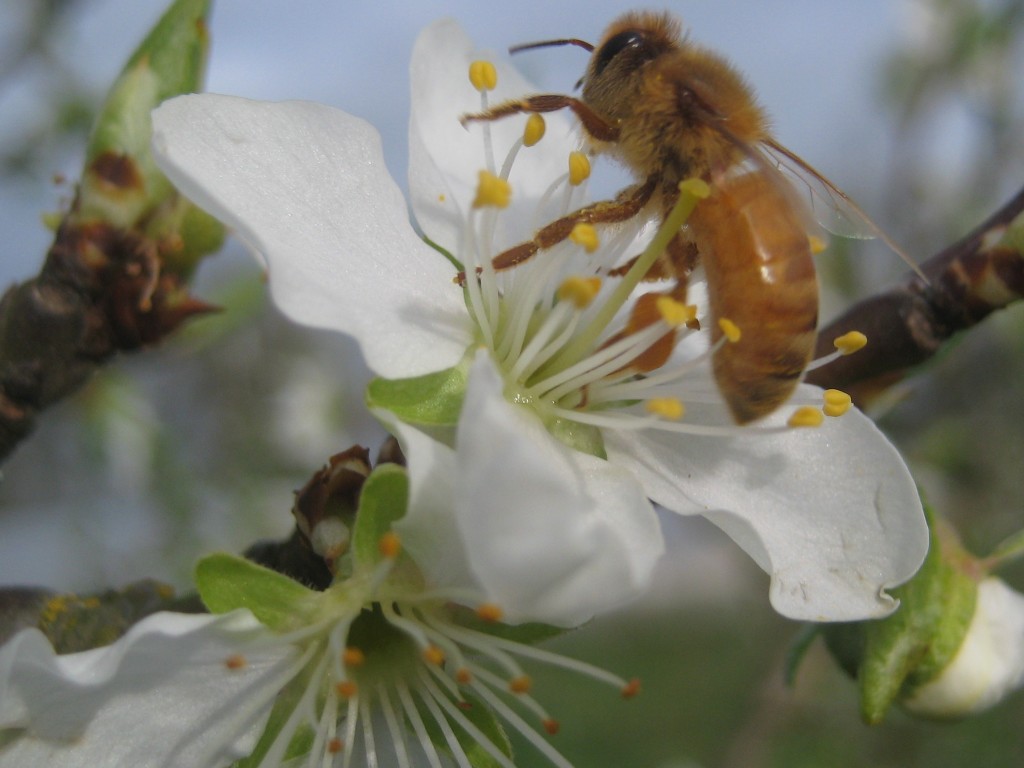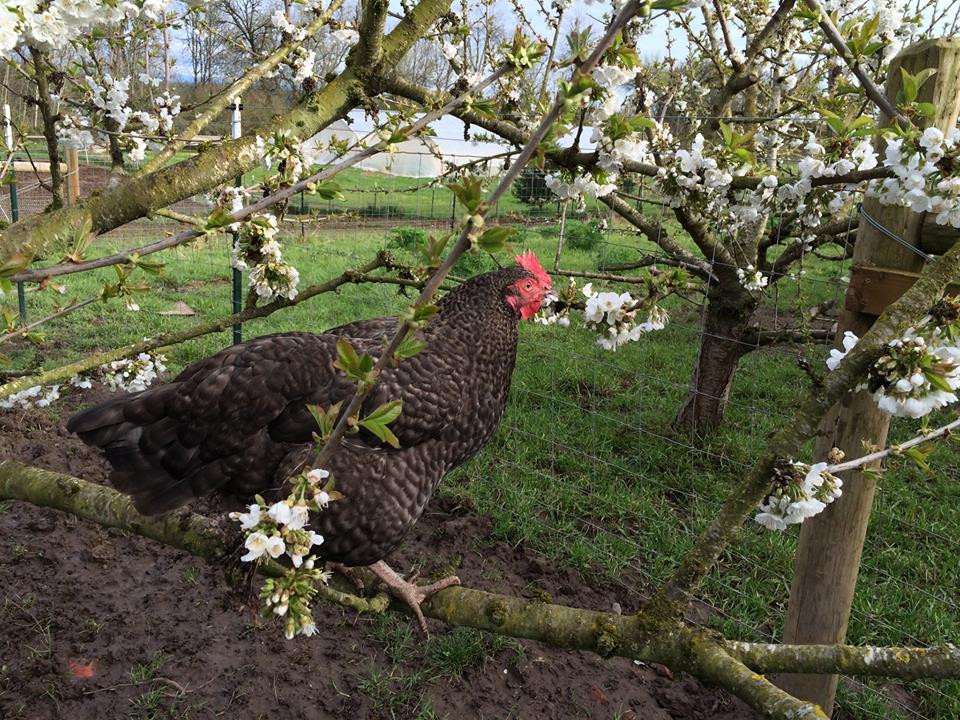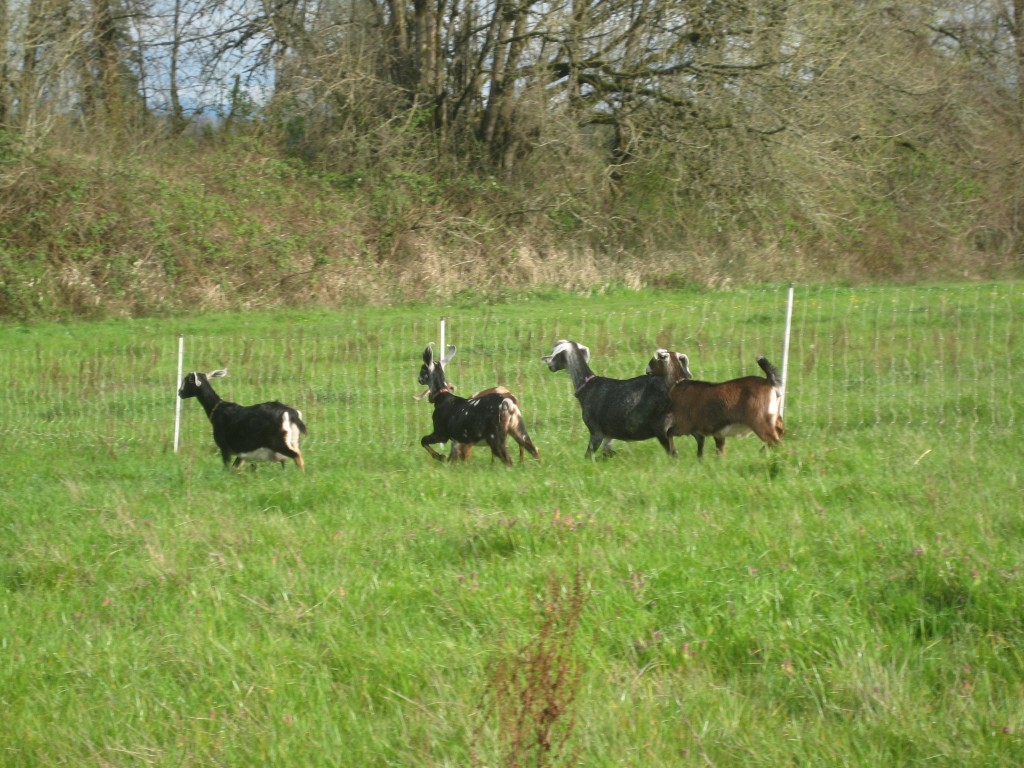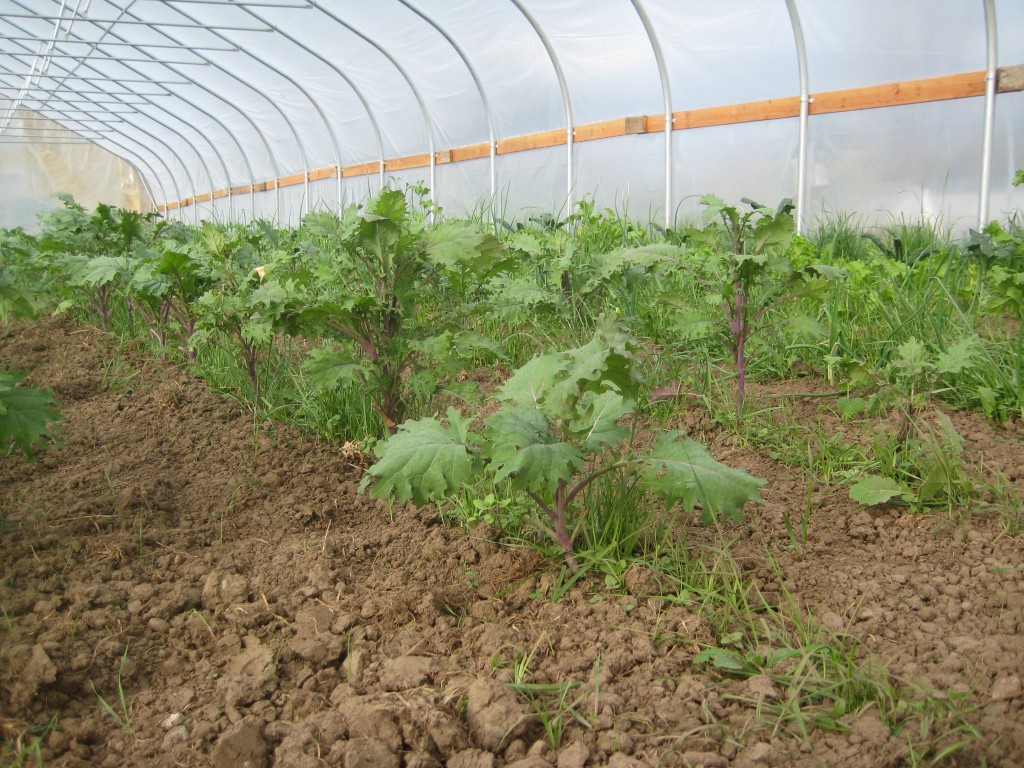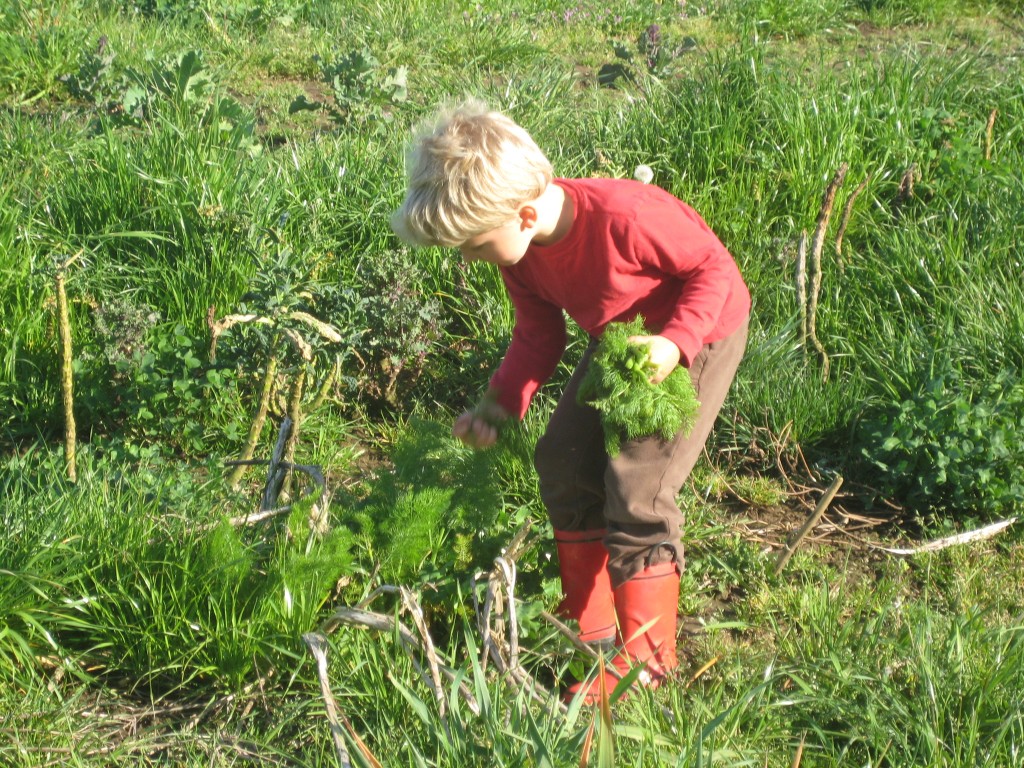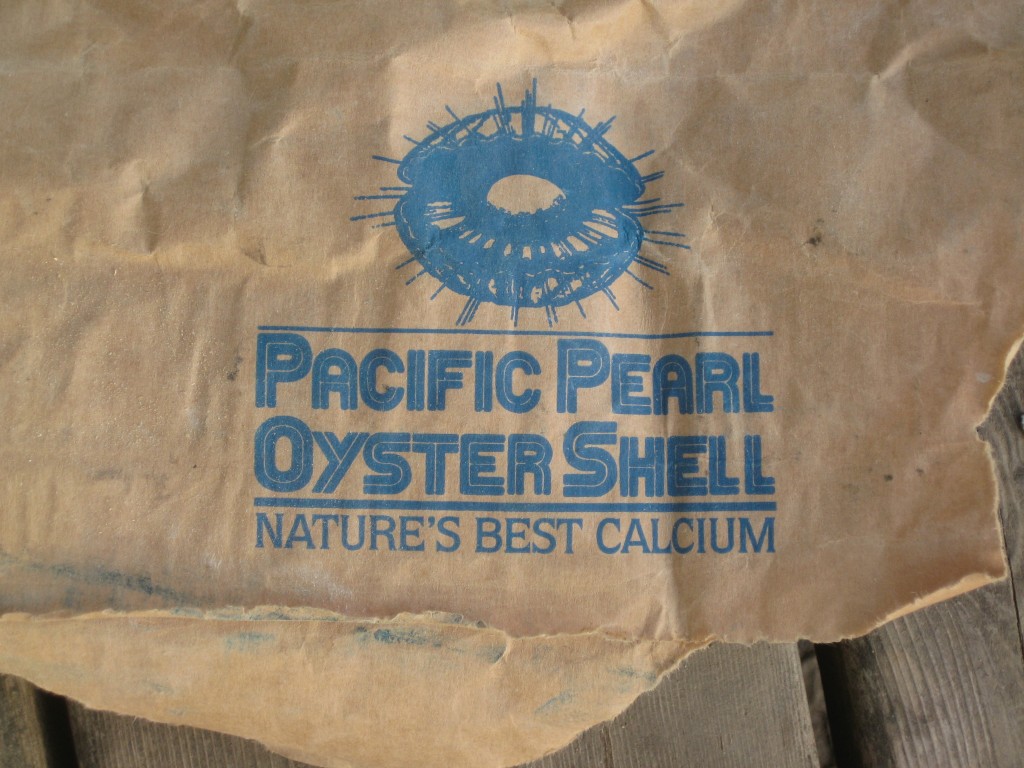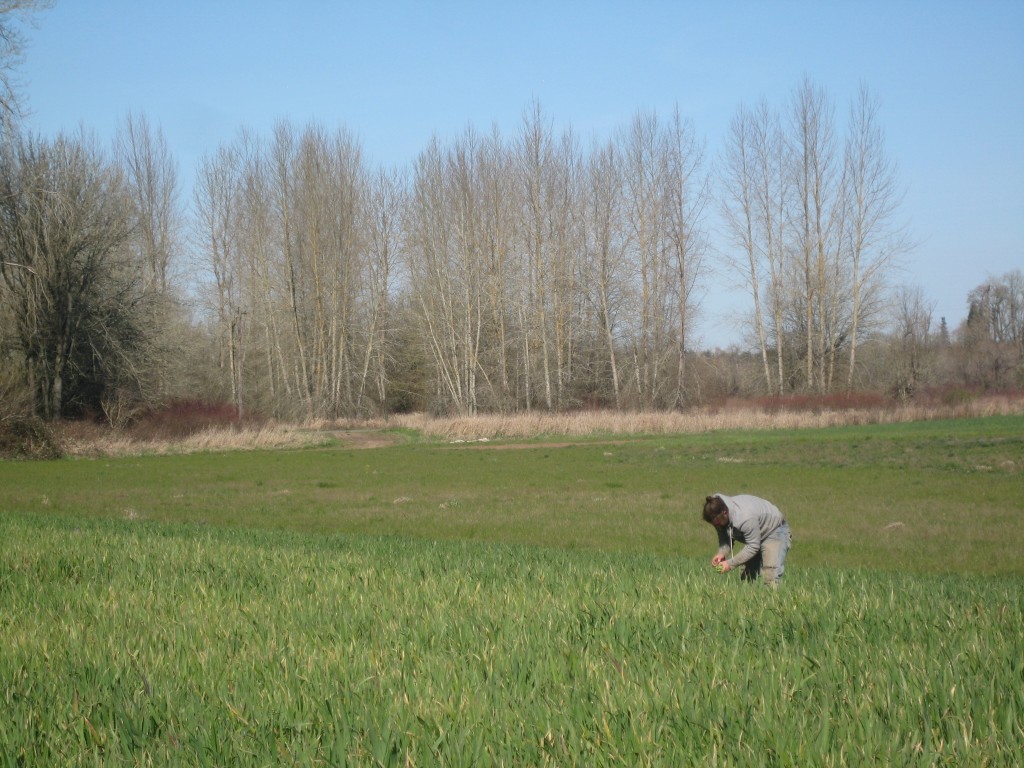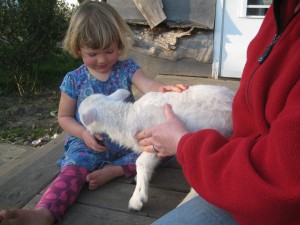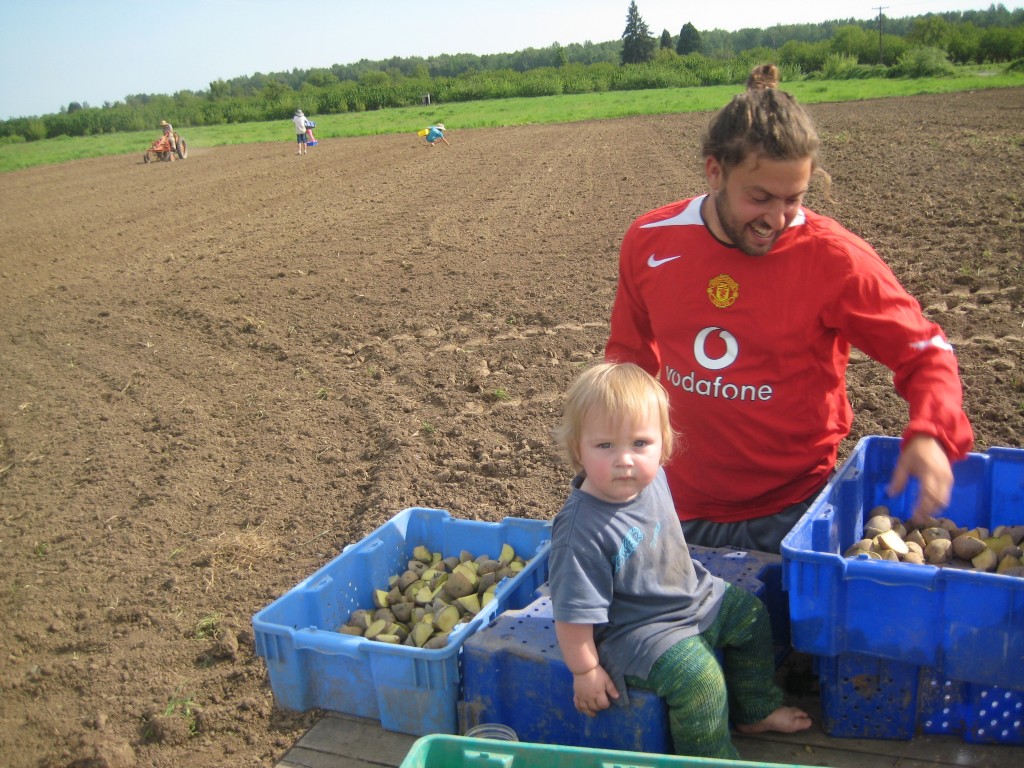
Last Friday, one of our youngest CSA members supervised as Jasper cut potatoes for seed. In the background, you can see folks dropping cut seed into furrows. On the far left is Casey riding our little orange tractor, covering up those seeds with hilling discs.
Last Friday, we welcomed May Day, also known as Beltane. In the turning of the year, this is the halfway point between the darkest parts of the year and the lightest parts. We are now in the half of the year with the greatest photosynthetic potential — a time that brings almost unbelievably rapid growth to all green leafy things in our fields and beyond.
This is the time of year when we have to completely change our mental calculations for upcoming harvests, because growth is not at all linear. The lettuce that only grew 50% between last week and this may well double size by next week. Strawberries that were green two days ago will ripen before we know it (and, yes, we have eaten the first of the ripe Hoods this week — in early May!).
This half of the year is exciting, bringing with it the bulk of our work and activity. Given the precocity of this particular season, we’ve already done a ton of planting and other work that might otherwise be crammed into May (see my post-script for an update on our new transplanter!).
But, our personal activities also seem to pick up in pace this time of year. It feels very much as though all that sun energy shifts our bodies into higher gear too. Already, Casey and I feel ourselves waking with more energy than we ever do in winter (regardless of amount or quality of sleep). Days are exciting, and we find ourselves filling non-work moments with visits and celebrations with friends and our wider community. Our family home is relatively small, and these sunny days also become the setting for most of the gatherings we host (since it is easier to be outside!).
Just last week, we launched the busier social season with our farm potato planting and potluck. The gathering was so lovely. Given the afternoon start time, we understood that most of our CSA members just couldn’t join us, but a few did, along with some other community members who wanted to visit and check out the farm (including two new farmers from outside of McMinnville — they joined us after a long day of work at their own farm!). The planting went off without a hitch, putting those potato seeds in the ground perfectly timed with the biodynamic planting calendar. Last year’s potatoes were planted similarly synched to the planets, and the harvest results were stupendous, so we’re excited to see how this year’s crop does as well. After we finished planting, everyone gathered by our house for a perfect potluck dinner — everyone brought complementary elements, and we feasted on baked potatoes, salad, pork, and banana bread muffins as the gold evening light descended on the fields.
The next day, our family headed off the farm to a friend’s homestead for a truly magical May Day gathering — flower-bedecked children, May pole, and all! After several hours of visiting, dancing, and playing in the mud (the children, that is), we headed home feeling so very sun-kissed (but, miraculously, not actually sun burnt).
I love this time of year. I love the energy we have for our work and the excitement of each coming harvest. Before we picked the first ripe strawberries this week, our family tasted the first of the ripe wild salmonberries on a walk in the woods. And, so it begins: that rolling thrill of successional harvests. Our children delight in knowing that every week of late spring and summer will bring something new. They eagerly anticipate the arrival of each new harvest and rejoice in first fruits of all kinds. Watching the progress of ripening fruit makes for good farm walks for us — I hardly need to prod the kids out the door if the destination is to “check on the plums.”
And, I must mention again, that of course all these first fruits are expected to arrive much earlier than usual. For us to eat ripe salmon berries and Hood strawberries in early May is exceptional. All signs point to all harvests arriving so early through the year. I hope we don’t get burnt out on summer’s glory too soon! But we’re choosing to not worry too much about the vagaries of this particular season. It is proving to be an interesting one, and I’m sure we’ll all talk and talk and talk about how it goes, remarking regularly on the earliest of each and every harvest. It’s not bad, this talking about the weather. We share our experience of the weather, so I like to think of it as important common ground in our community.
This evening, the clouds are rolling over the farm, bringing ever-changing qualities to the light. When the sun hits, wow it is warm. But this morning, we still put on our sweaters to leave the house. Oh, May, how lovely you are with your sweet sunshine, green growth, and [relatively] mild warmth. Thank you for joining us again this year!
Enjoy this week’s vegetables!
Your farmers, Katie & Casey Kulla
P.S. The new transplanter got more use this week, once again allowing Casey and the crew to get a lot of starts in the ground in dribs and drabs of work over Monday (a day also filled with other things, like delivery of animals to the butcher and friends visiting for lunch). This time, I got a photo, so you can see what it looks like behind the tractor:
~ ~ ~
Farm news:
- First, for those of you who still want to attend a farm event this year, I want to remind you of two more opportunities this season: We will have a farm dinner on Saturday, August 15, and our Pumpkin Patch open house in the afternoon of Sunday, October 25. Put those dates on your calendar!
- And, if you’re thinking a CSA payment must be coming soon, then you are correct! The next payment is due in two weeks, on May 21. I will send out email statements with exact amounts and account history next week. If you have any questions after receiving those, please email me! Thank you!
~ ~ ~
Meet this week’s vegetables:
- Head lettuce — Yes, I’ll mention it again: our family is eating lots of salad lately. At least one salad every day. Always dressed with our new favorite “creamy” dressing (scroll down to find that “recipe” in last week’s newsletter).
- Stinging Nettles — I’m guessing that the nettles are winding down for the season. It’s been a solidly good run, and we are grateful for how much we’ve been able to eat this spring!
- Kale
- Chard
- Parsley
- Celery leaf
- Potatoes — I felt sort of ridiculous last week, when I put a big load of potatoes in a pan to bake for our CSA potluck. It was such an easy way to feed a lot of people at once that I remarked on it several times! Why baking potatoes felt like such a revelation is a mystery to me. I suppose our default is always to chop and roast — it’s certainly much faster, and I love all those deliciously crunchy edges. But with a bit of lead time, baking potatoes certainly beats many other cooking options for easy feeding of the masses. Mothers of countless generations before me have known this to be true. And, so, I am finding myself repeating that simple choice more. Even the leftovers are great, since our yellow potatoes don’t turn mushy when baked. I can slice them and reheat the already cooked potatoes on a baking sheet (and, yes, then we get those deliciously crunchy edges too).
- Leeks
- Garlic
- Corn flour
- Some extra treats too … !
And this week’s extra goodies from the farm: Remember to bring containers when appropriate! Especially for eggs!
- Corn flour — $5 lb
- Oat flour — $5 lb
- Walnuts — $5 lb
- We are still taking a break from the fermented veggies — we’re just in a lull between obvious “fermentable” options! Chard stalks, pickled, next week!
- Eggs — $4 dozen
- Pork cuts — We’ve got shanks, pork belly, fresh ham roasts, and lots kinds of roasts! Prices vary.
- Pork fat & skin — $3 lb
- Lamb — More lamb coming next week!
- Ground beef — More beef coming next week! (Including bones!)

